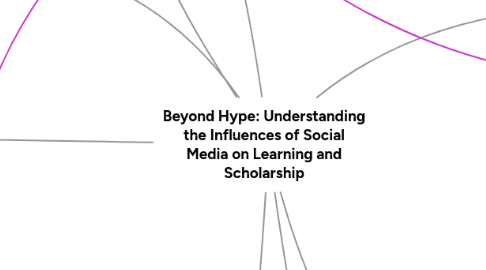
1. Social Learning Principles/Historical Analysis
1.1. Dewey: Experience & Education
1.2. Lev Vygotsky
1.3. Gardner/Multiple Intelligences
1.4. Rousseau
1.5. Bruner
2. Hype or Real?: Watch
2.1. Link to Presentation on Social Scholarship from 7-20-2010
2.2. Six Fallacies of Social Media
2.3. Web 2.0 The Machine is Us/ing
2.3.1. Information Revolution
2.4. An Anthropological Look at YouTube (Digital Ethnography --this is 50 min...but a really good talk and it will fly by).
2.5. Twitter and World Simulation
2.5.1. WorldSim Preview
2.6. I Think...
2.7. Clay Shirky: How Social Media Can Make history
2.7.1. Clay Shirky: instituions v. Collaboration
2.8. Lawrence Lessig: Re-examining the Remix
2.9. Sir Ken Robinson: Bring on the Learning Revolution
3. Hype or Real? Readings
3.1. The Future of Thinking
3.2. The Shallows
3.2.1. Interview: Nicholas Carr from The Colbert Report
3.2.1.1. Does Google Make Us Stupid?
3.3. Cognitive Surplus
3.4. Ubiquitous Learning
3.5. Connected: The Surprising Power of Our Social Networks
3.6. Deep Time of the Media: Toward an Archaeology of Hearing & Seeing by Technical Means
3.7. Digital Academe
3.8. Scholarship & The Digital Age
3.9. Connecting to the net.Generation
3.10. danah boyd: Social Network Sites: Definition, History and Scholarship
3.10.1. danah boyd's complete publication list
3.11. The Future of Online Socializing (Pew Internet Forum)
4. Implications for Learning
4.1. Higher Education
4.1.1. Future of Liberal Arts (Ted Talks)
4.1.2. Ray Kurzweil Singularity University
4.1.3. HASTAC
4.1.4. Wal Mart University
4.1.5. How Social Media Could Make Ph.D's Unnecessary
4.2. K-12
4.2.1. Charles Leadbeater: Education innovation in the slums
4.3. One Laptop Per Child
4.4. The Rise of Personal Learning Communities
4.4.1. Twitter as a Personalized Learning Netowrk
4.4.2. Socially Learning Network for "Tweachers"
4.5. For Kids By Kids: TakingIT Global
5. Modern Philosophers?
6. Misc. Interesting Reads For Future Reference
6.1. danah boyd: How Racist Language Frames Social Media (and Why You Should Care)
6.2. Microsoft's Vision of Life in 2019
6.3. Edutainment: Tweet not real word (NYTimes) video commentary: Colbert report
6.4. Students Addicted to Social Media
6.5. How Twitter Helps Researchers Visualize the Moods of Americans
6.6. Where Students Spend Time Online
6.7. How Millennial Are You: A Quiz
7. Examples of Web 2.0 Tool Types
7.1. Wikis
7.1.1. PBWorks
7.1.2. WetPaint
7.1.3. Wikispaces
7.2. Blogs
7.2.1. Tumblr
7.2.2. Blogger
7.2.3. WordPress
7.2.4. Edmodo
7.3. Video
7.3.1. YouTube
7.3.2. SchoolTube
7.3.3. Vimeo
7.3.4. Viddler
7.4. Photosharing
7.4.1. Flickr
7.4.2. Picasa
7.4.3. Twitpic
7.5. Communication
7.5.1. Facebook
7.5.2. Twitter
7.5.3. New node
7.5.4. LinkedIn
7.5.5. YouTube
7.5.6. Ning
7.5.7. Edmodo
7.6. Link Sharing & Tagging
7.6.1. Digg
7.6.2. Delicious
7.6.3. Stumble upon
7.6.4. Twitter
7.6.4.1. Packarati.us
7.7. Search within Networks
7.7.1. Twitter
7.7.1.1. Google featuring Twitter
7.7.2. Mendeley
7.7.2.1. Scholarly searches
7.7.3. LinkedIn Search
8. Communication Modes
8.1. Synchronous/Live
8.1.1. Skype
8.1.2. Chat
8.1.3. Twitter
8.2. Asynchronous
8.2.1. Email
8.2.2. Discussion Boards
8.2.3. Twitter
8.2.3.1. Backchannel Communication Types
8.2.4. LinkedIn
8.2.5. Facebook

